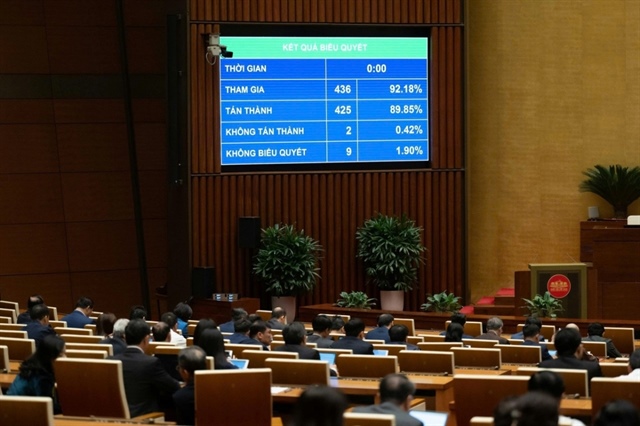Making a case for river transport
Making a case for river transport
The Minister of Transport, Dinh La Thang, said yesterday he would ask the Government for policies to attract investment to inland waterway facilities.

Thang told a conference on boosting water transport throughout the Hong (Red) River Delta that it was necessary for agencies and localities to recognise the role of inland waterways in helping create a balance among different modes of transport.
He said river haulage generally cost less than road or rail transport and could carry super-long and super-heavy loads.
In the delta region, water transport had huge potential because it involved 10 out of the 18 main river routes in Viet Nam and had a total length of 1,550km of rivers and canals.
The region is also home to economic hubs such as Ha Noi, Hai Phong, Quang Ninh which have high demand for coal and building materials.
River transport carries about 25 per cent of total goods transported in the region.
Minister Thang said that to take full advantage of river transport, he would give priority to projects to open new routes and canals linking up with road and marine transport.
A representative from the Waterway Transport Company (VIVASO) said that little money had been spent on river transport or adjusting and dredging rivers and canals.
Some routes faded in the dry season because of low river levels. In some cases, the space between the river and bridges was too low for boats to pass.
He said investment could bring great economic benefits. For example, to carry one tonne of goods by road from Ha Noi to Viet Tri cost VND4,000, only VND500 by river.
He added that the link between rail and rivers also needed adjusting because both systems offered cheap transport.
"However, logistic costs or costs to load or unload goods and carry goods from trains to boats and vice versa are too high," he said.
Pham Minh Nghia, chairman of the Viet Nam Inland Waterway Transportation Association, said that now was the time to improve public awareness about inland waterway transport as cheap, fast and safe.
In Belgium, England and the Netherlands, waterways were first choice for transporting extra-long or heavy goods.
In Viet Nam, inland ports and ferries were small scale and scattered, he said, emphasising that it was crucial to develop proper facilities with customs areas, storage and road links.
He noted that waterway tourism had developed well in the south, but not in the Red River Delta.
Deputy director of the Directorate for Roads, Nguyen Van Quyen, said that about 70 per cent of goods and 90 per cent of passengers were transported by road, creating an imbalance among transportation modes.
To reduce overloading on roads and cut costs, harmonious development of different transport modes was needed.
He suggested setting up a trading floor for the transport sector where transport firms, logistic firms and goods owners could operate.
The floor could help create healthy competition and reduce costs - including bribery.
vir



















